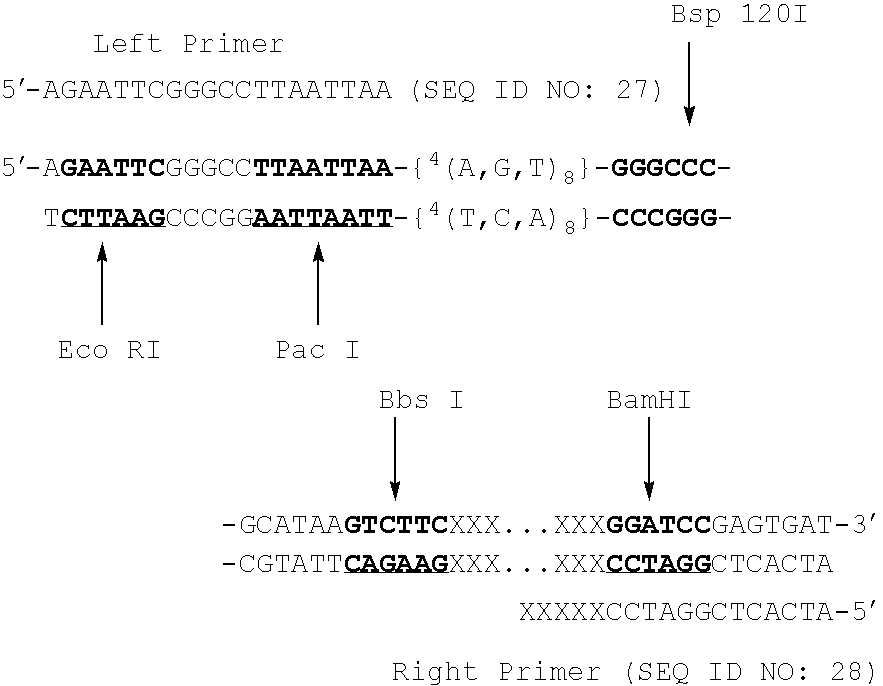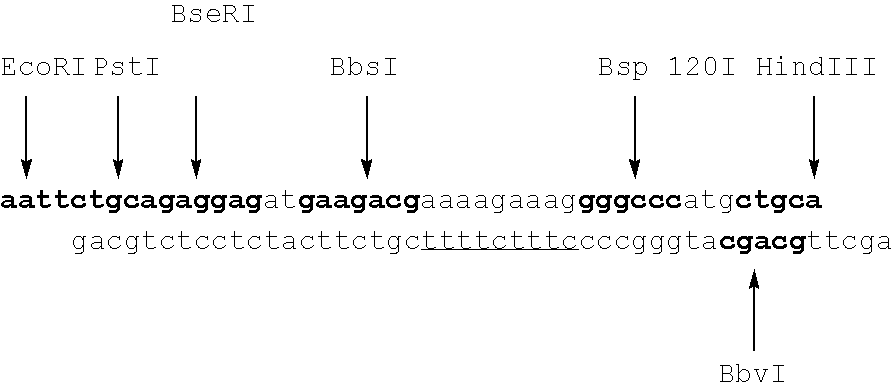Polymorphic DNA fragments and uses thereof
a polymorphic dna and fragment technology, applied in the field of polymorphic dna fragment isolating, can solve the problems of difficult task of finding significant differences, e.g., those associated with disease conditions, and significant limitation, so as to facilitate the addition of additional moieties, increase the stability and half-life of such molecules, and reduce the resistance or susceptibility to digestion
- Summary
- Abstract
- Description
- Claims
- Application Information
AI Technical Summary
Benefits of technology
Problems solved by technology
Method used
Image
Examples
example 1
Isolation of Taq I-Polymorphic Fragments from a Sau 3A-Digested pUC19 in the Presence and Absence of Phage Lambda DNA
[0122] In this example, a conventional pUC19 plasmid was modified to create two additional Sau 3A sites between the Taq I sites located at base positions 430 and 906 of the plasmid (FIG. 7). This newly created plasmid (P0T2S) was then modified further with the addition of a Taq I site between the two new Sau 3A sites, to create the plasmid p1T2S. Thus, the two plasmids are polymorphic at the new Taq I site. The two plasmids were digested separately with Sau 3A.
[0123] Single stranded portions of Sau 3A fragments containing Taq I sites (Taq+ fragments) were generated with the protocol outlined in FIG. 8A using the adaptors and primers whose sequences are listed below. The Sau 3A digested p1T2S plasmid (800) was filled in with dGTP and then an excess of Q adaptors was added (802) in a conventional ligation reaction to form product (804), which was then digested with Ta...
example 2
Isolation of Tai I-Polymorphic Fragments from a BstYI-Digested Human Genomic DNA
[0129] In this example, a first sample of genomic DNA was obtained and pooled from white blood cells isolated from a population of five diabetic patients. Separately, a second sample of genomic DNA was obtained and pooled from white blood cells isolated from a population of five normal individuals. Genomic DNA from white cells was isolated from whole blood by the protocol given below. Equal amounts of DNA from the first and second samples were combined in order to isolate Bst YI fragments (“Bst YI reference fragments”) capable of containing Tai I restriction site polymorphisms. Two aliquots were removed from the combined DNA samples and were separately digested to completion with Bst YI using the manufacturer's recommended protocol. Bst YI fragments containing Tai I sites (“Tai+ fragments”) were isolated from one aliquot by the protocol outlined in FIGS. 9A and 9B, and Bst YI fragments lacking Tai I sit...
example 3
Construction of an Eight-Word Tag Library
[0170] An eight-word tag library with four-nucleotide words was constructed from two two-word libraries in vectors pLCV-2 and pUCSE-2. Prior to construction of the eight-word tag library, 64 two-word double stranded oligonucleotides were separately inserted into pUC19 vectors and propagated. These 64 oligonucleotides consisted of every possible two-word pair made up of four-nucleotide words selected from an eight-word minimally cross-hybridizing set described in Brenner, U.S. Pat. No. 5,604,097. After the identities of the inserts were confirmed by sequencing, the inserts were amplified by PCR and equal amounts of each amplicon were combined to form the inserts of the two-word libraries in vectors, pLCV-2 and pUCSE-2. These were then used as described below to form an eight-word tag library in pUCSE, after which the eight-word insert was transferred to vector pNCV3 which contains additional primer binding sites and restriction sites to facil...
PUM
| Property | Measurement | Unit |
|---|---|---|
| Volume | aaaaa | aaaaa |
| Volume | aaaaa | aaaaa |
| Volume | aaaaa | aaaaa |
Abstract
Description
Claims
Application Information
 Login to View More
Login to View More - R&D
- Intellectual Property
- Life Sciences
- Materials
- Tech Scout
- Unparalleled Data Quality
- Higher Quality Content
- 60% Fewer Hallucinations
Browse by: Latest US Patents, China's latest patents, Technical Efficacy Thesaurus, Application Domain, Technology Topic, Popular Technical Reports.
© 2025 PatSnap. All rights reserved.Legal|Privacy policy|Modern Slavery Act Transparency Statement|Sitemap|About US| Contact US: help@patsnap.com



